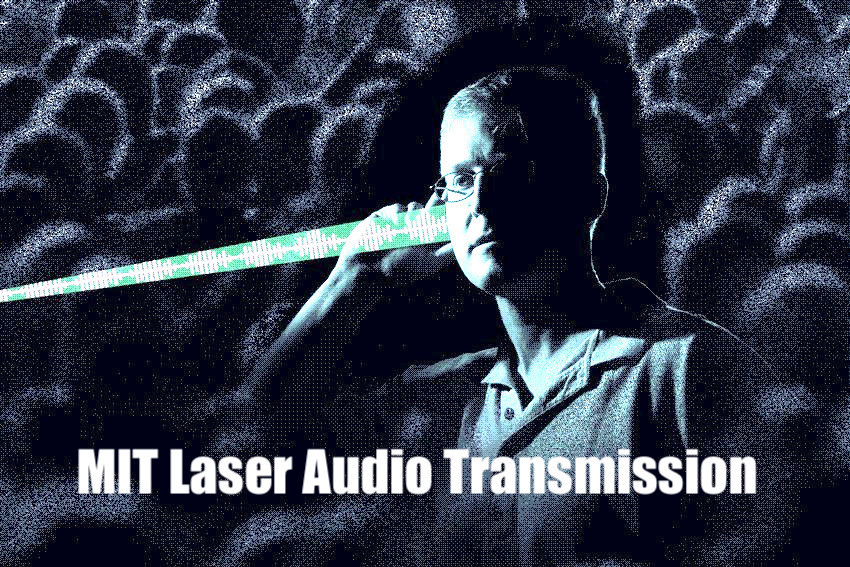- in Acoustics , Gear , Speakers by Bobby Owsinski
This Might Be The Transducer Breakthrough We’ve Been Waiting For

For about a hundred years loudspeaker technology has worked pretty much the same way. An electronic signal is changed into mechanical energy thanks to a magnet and moving coil attached to usually a paper diaphragm, which then moves the air. Sure, there have been other tries at transmitting sound through the air, like electrostatic and even flame modulation, but the tried and true loudspeaker has been how we’ve reproduced or reinforced sound almost since the beginning. Those clever boffins over at MIT might have come up with a technology to change that though.
Researchers have been able to use a laser to transmit audio across a room, but without using any receiving gear to do so. While something similar might have been done before, this is the first use of a completely safe to the eyes and skin laser doing the transmission. And they discovered not one way to do it, but two as well.
Both techniques make use of the photoacoustic effect. That means that the formation of sound waves comes from some material that’s capable of absorbing light. In this case, the material used was the water vapor in the air (even in very dry conditions there’s always at least a little of it).
One of the transmission methods swept a laser at the speed of sound where changing the length of the sweep would encode different frequencies. This technique allowed them to transmit audio to a person more than 8 feet away at a level of up to 60dB SPL without anyone between the source of the sound and the target hearing it.
The second method encoded an audio message by adjusting the laser’s power, which was reported to attain a higher fidelity result but with less level.
Suffice it to say that this transmission method isn’t near commercialization yet, and using it in studio or sound reinforcement is further off than that, but it’s a start in the right direction. It’s time to change the loudspeaker paradigm!
[Photo: Massachusetts Institute of Technology’s Lincoln Laboratory]Sorry, but comments have been disabled due to the enormous amount of spam received. Please leave a comment on the social media post related to this topic instead.

